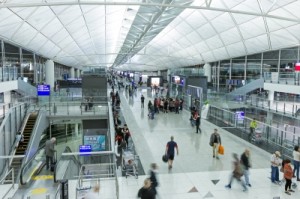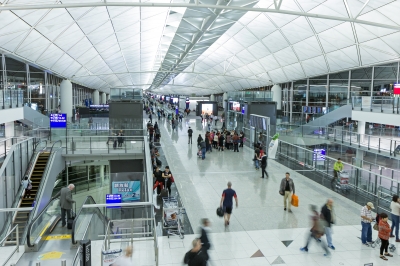
Cebu Pacific flight 5J118 was to depart Ninoy Aquino International Airport Terminal 3 for Hong Kong at 4:40pm on May 28. Passengers had thought so, as that was what their itinerary stated.
After an hour of waiting at the poorly air-conditioned terminal, the exasperated passengers — a mix of Filipino, Chinese and Caucasian travelers – were relieved to see the Airbus 320 plane of Cebu Pacific taxi down the runway and park at Gate 111.
Cebu Pacific staff had been advising the passengers about the delay long before the expected late arrival of the plane, saying the delay was due to a combination of longer turnaround at the port of origin, in this case, Hong Kong, and air traffic congestion at NAIA.
“Finally, we’ll be flying out soon. It’s always been like this here in Manila,” said one irritated passenger, and it looks the problem won’t go away just soon.
A comparison of air traffic volumes at NAIA and the Hong Kong International Airport shows that the Manila airport handles 43.9% more flights than HKIA. That’s because the four terminals that make up the NAIA serve international and domestic flights, in addition to general aviation.
The latest statistics available on the Civil Aviation Authority of the Philippines website show that for the whole of 2012, NAIA handled 311,664 domestic flight movements, 159,370 international, and 75,122 general aviation.
That boils down to 1,496 flight movements a day, a staggering number that has led the Aquino administration to consider building a new aviation gateway outside Metro Manila that could accommodate the expected growth in air traffic in the next decade as low-cost carriers and an improving local economy propel demand for air travel.
Deputy director general John Andrews of the CAAP has been reported as saying airlines have been incurring more than P7 billion a year in losses from massive fuel expense because of the worsening air traffic congestion.
He estimated that airlines consume 200,000 to 400,000 kilograms in additional fuel, or P10 million to P20 million a day, as a result of the congestion.
Airlines incur close to P3.7 billion a year in added fuel expenses and lose another P3.7 billion from “engine costs and cost of aircraft time,” he said.
Andrews said airlines using NAIA are supporting a plan to build a second parallel runway for the airport, where its sole primary runway has been struggling to keep up with increasing demand for air travel, according to the report.
The 2,300-meter-long second runway is shorter than the 3,400-meter main runway, but its completion will allow a 50% increase in take-offs and landings to 60 per hour from 40 currently. It is estimated to cost P2 billion, Andrews said.
Like Manila, Hong Kong has also been grappling with air congestion for decades because of its enviable position as the financial hub of Asia and arguably, the shopping capital of the world.
The southern Chinese city will build a third runway to cope with over 1,000 flight movements a day at HKIA. The airport operates at a runway capacity of more than one flight a minute.
In 2012, the city’s Airport Authority estimated the airport’s two-runway system would reach its maximum capacity of 420,000 flight movements annually between 2019 and 2022.
As of April 14 this year, the airport had recorded 379,600 flight movements for the past 12 months, or an average of 1,040 incoming and outgoing flights a day. A three-runway system would be able to accommodate 620,000 flight movements a year, the authority said.
The Airport Authority says it will take about three years before construction can begin as it has yet to complete a full environmental impact assessment, approve design details for the facilities and confirm funding channels for the US$11.1 billion project. The runway is scheduled to be running at full capacity by 2020.
Back in Manila, departures and arrivals that are delayed by about an hour will remain regular events passengers will have to put up with at NAIA while waiting for a new airport outside the city or for expanded facilities such as a second runway at the present airport.
For Cebu Pacific passengers, as well as those taking other carriers, a similar but shorter delay awaits them in Hong Kong, as air traffic controllers guide one incoming flight and flag off an outbound plane within a one-minute span. – Vir Lumicao
Image courtesy of papaija2008 / FreeDigitalPhotos.net





